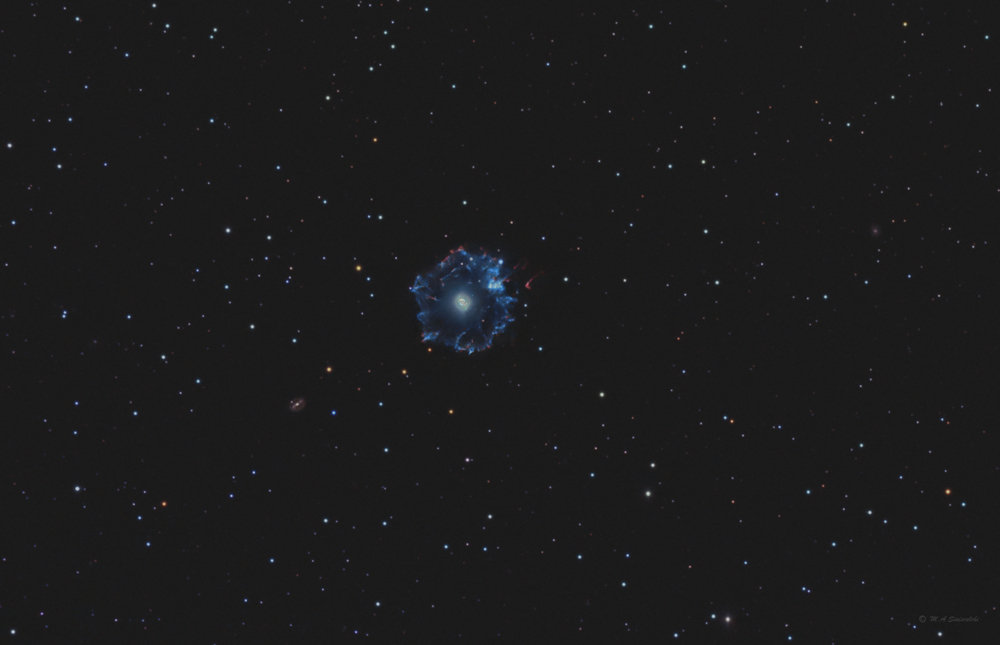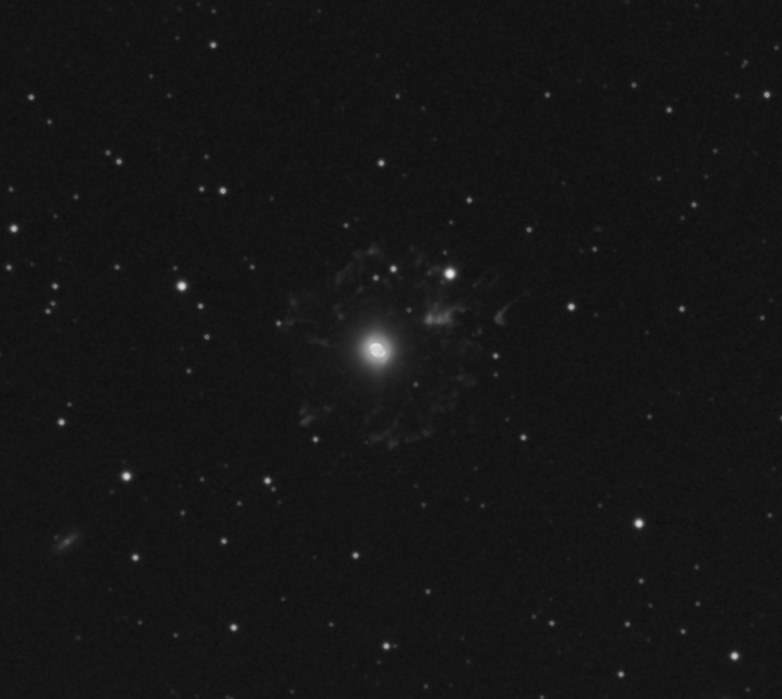
Location & Date
|
Backyard, Abbott Observatory- Long Island, NY, May/June 2022
|
Telescope
|
TMB130SS 910mm F/7 APO, Moonlite focuser, Losmandy G11 Gemini
Image scale 1.54 arcsec/pixel
|
Camera
|
SBIG ST-10XME
Baader Ha OIII 5nm & R G B filters
CCD temp -15°C
|
Exposures
|
Ha- 27x10m OIII- 27x10m Red- 18x3m Green- 18x3m Blue- 18x3m Bin 1x1
|
Planning & Acquisition
|
Sequence Generator Pro
|
Processing
|
CCDStack - Calibration, Debloom, Normalize, Alignment, Stacking, Deconvolution
Adobe PS - Ha + OIII & RGB combine, Color adjustments, Noise reduction, JPEG conversion
RC-Astro Star XTerminator & Grad-X
Topaz Gigapixel AI - core details
This is a bi-color pallette where Ha=red, OIII=blue and Ha+OIII=green. RGB is used for star and faint galaxy colors.
|


